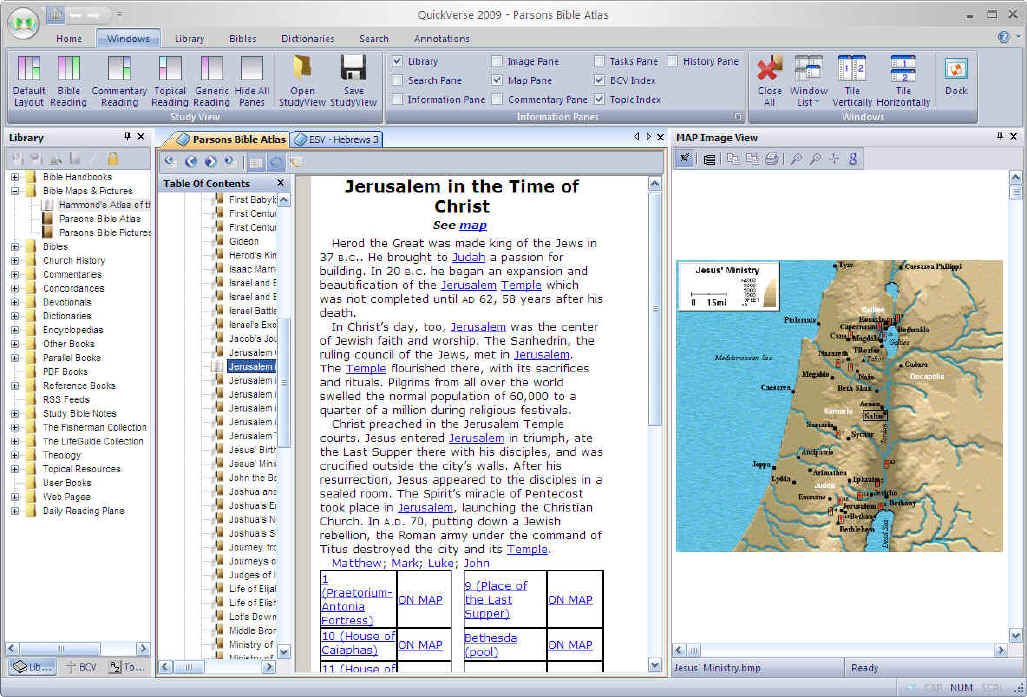I was first up in the Computer Assisted Research Group today with my presentation on "Digital Resources for Biblical Mapping." I have a 'metapage' of biblical mapping resources, and if you check under Presentations, you can download a PDF handout of my presentation or check out the Quick Summary. I'd like to think it was well enough received by the 25 or so people in attendance.
Thomas Naef from the University of Lausanne described the workings of BiBIL.net and some anticipated upgrades. BiBIL is:
BiBIL (Biblical Bibliography of Lausanne) is the bibliographical database produced by the University of Lausanne's Institut romand des sciences bibliques (IRSB – Insitute for Biblical Studies of the French speaking part of Switzerland). It offers the scholar reliable, constantly increased and freely available information on publications in the field of Biblical research.Close to 90,000 [corrected: not 9000] articles/titles are indexed at this time provided by a number of European publishers (including Sheffield Phoenix). It is very much worth checking out, and note especially the way that searches can conducted. If you type in a biblical book name in the book box, then click on the I info icon next to it and note the specificity with which you can select biblical chapters/verses to search that are included in their database. This is one of
the few sites where you can search on Greek or Hebrew terms. Try clicking in a couple of Hebrew/Greek letters, and then click on the Info icon to see what words match. Very nice! Also be sure to click on the Thesaurus button to see the categories and texts into which articles are organized and the number of articles available for each. The only problem? I found 6 articles I had not known about that now I should probably read for a book I'm writing. (Sometimes ignorance is bliss...)
Thomas also has a great collection of links on his personal site, especially for texts, online journals, bibliographies, and other resources related to biblical studies. Definitely worth checking.
Kent Clarke from Trinity Western University describe what is happening with "The BibleWorks Biblical Manuscript Transcription and Collation Project." He is going to send me a screen shot, and I will say more about this later.
Sonya Kostana at the University of Alberta demonstrated the online Journal of Hebrew
Scriptures now released in XML format as compared to earlier HTML. It is an open access journal that is fully Unicode. She showed the great advantages of searching XML docs with the embedded metadata as compared to HTML searches which are basically text only searches. Use the XML search here.
You can choose author, title, Bible reference, etc, then select always for an AND search or leave the middle box blank for an OR search, then start typing a term in the last box. As you type a dropdown box will indicate matching terms and the number of articles for each. After running a search, depending on the results, you will be able to see hits in the document, a review of the document, or (if available) the document itself. The beauty of XML is not yet exhausted.
Within the article, you will see hyperlinks to authors or biblical texts which have embedded XML data that can be linked out to further resources. Here, for example, is what pops up when clicking on a biblical text reference.
 Another outstanding resource...
Another outstanding resource...Enough for now... Met a bunch of interesting people, and this SBL meeting was a great time for learning and networking.






















